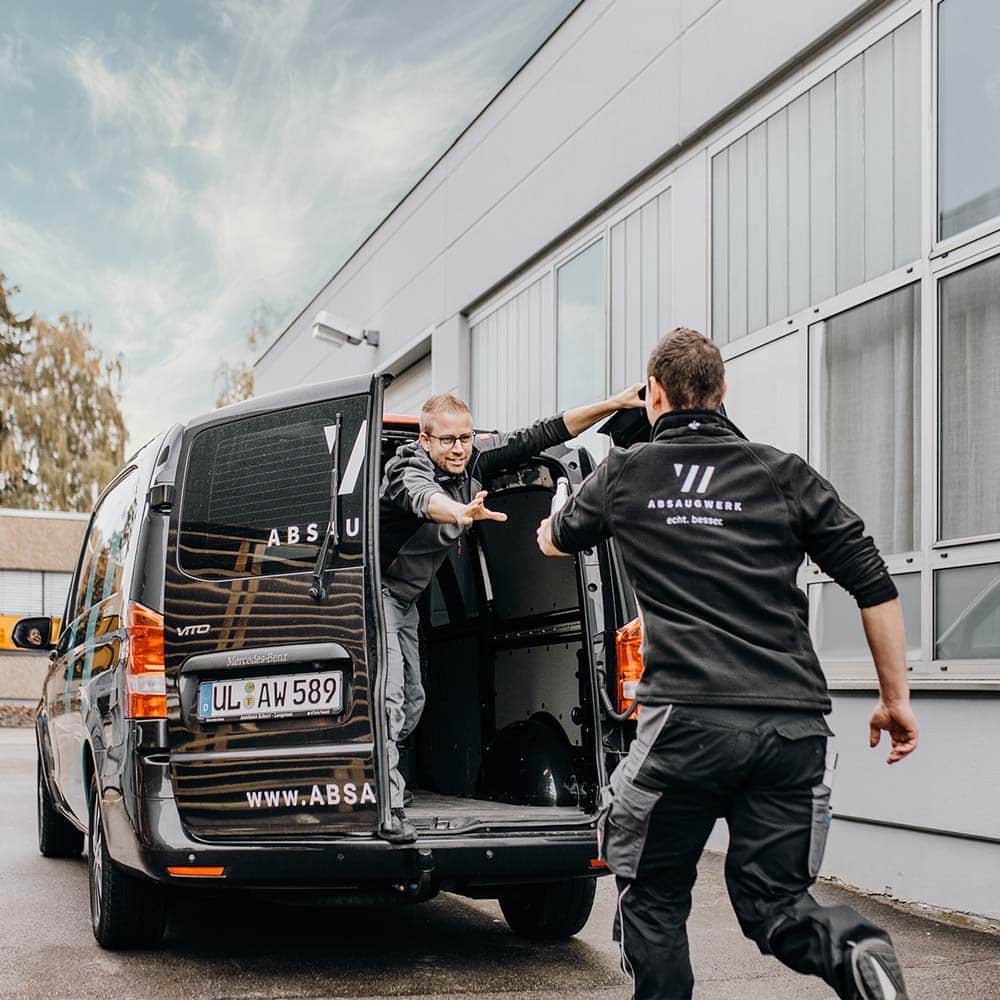
Hall extraction advantages & disadvantages
What speaks for and against a hall extraction system?
A hall ventilation or hall extraction system is used in industry to distribute and filter fresh air and exhaust air in production halls in a controlled manner. Extraction units capture pollutants such as smoke, dust or viruses from the air and filter them across several filter levels. In this way, the cleaned room air can be fed back into the hall and, if necessary, enriched with fresh air.
Heat recovery can save and reuse up to 70 % of the energy. Refurbishment with an energy-efficient hall extraction system also makes sense in existing halls and drastically reduces operating costs.
Advantages
-
Flexibly usable area
-
No restriction due to point extraction or filter towers
-
Air purification and air circulation of the entire hall air
-
Protection against mold
-
Healthy indoor climate
-
Fewer cases of illness
-
Effective heat recovery
-
Economical for new and existing halls
-
Reduction of operating costs through renovation
-
20 % BAFA subsidy
Cons
-
Higher costs for purchase
and installation
Technologies hall extraction systems
As a manufacturer of extraction systems and hall extraction, we supply holistic systems from a single source. This includes: Captures, pipe system, extraction unit and other accessories. Integrate point captures such as extraction tables, extraction hoods or extraction arms. Optionally, we also offer cross heat exchangers, continuous mixing of fresh air and individual solutions for your application.
Push-Pull:
With push-pull mixing ventilation, the purified air is introduced via long throw nozzles of the supply air pipe at the hall ceiling and sucked in on the opposite side through extraction nozzles of the exhaust air pipe and filtered in an extraction unit. The hall air is mixed, particularly in the upper third of the hall, where the warm and polluted air collects.
Push-Pull Plus:
In Push-Pull Plus systems, additional air source emitters on the floor support the intrinsic thermal properties of the welding fumes. The contaminated air rises faster and is captured at the hall ceiling, passed through an extraction unit via a pipe system and filtered.
Layered Ventilation:
With the principle of stratified ventilation, the purified air is supplied via displacement outlets near the floor. The fresh air mixes again with pollutants, heats up and rises upwards due to its thermal properties, where it is extracted via the exhaust air pipe on the hall ceiling and cleaned in an extraction unit.
Inverse layer ventilation:
In contrast to stratified ventilation, inverse stratified ventilation works in reverse. The cleaned air is blown towards the floor via jet nozzles in the fresh air duct at the ceiling of the hall. There, the clean air mixes with the polluted air and is captured again near the floor via extraction columns or extraction hoods and filtered in an extraction unit.
Get individual advice
We can help you find the best extraction solution for your production facility.
Please feel free to contact us.
Planning an economical and energy-efficient hall extraction system requires the inclusion of numerous technical parameters.
Criteria and parameters for planning a hall extraction system:
The differences in the nature of production halls and the procedures and processes that take place there require an individual ventilation system and careful planning for each hall extraction system. Depending on the number of workplaces and the daily working hours, emissions such as smoke, dust or oil mist develop in varying quantities. If these released media are respirable, carcinogenic or explosive, this must be taken into account when choosing and numbering the filters. As a professional manufacturer of hall extraction systems, we include all relevant parameters:
- Area, room volume and ceiling height
- Construction type of the hall
- Process(welding, grinding, sawing, deburring, etc.)
- Material type and quantity (carcinogenic, respirable, explosive)
- Emission development (strong, medium, weak)
- Existing selective extraction
- Simultaneity of extraction
- Working hours and shift operation
- Refurbishment or new construction
- Recirculation/exhaust air operation
- Course of pipe system
- Cleaning intervals and times of the filters
- Capture elements
- Discharge systems
- Installation location and space requirements
- Air flow course
Based on these criteria, an individual hall extraction system can be planned economically and energy-efficiently. Based on these criteria, an individual hall exhaust system can be planned economically and energy-efficiently. Further requirements that need to be taken into account result from the workplace and emissions ordinance as well as from numerous other DIN and EU standards.
Energy-saving and sustainable hall extraction
Investing in a state-of-the-art ventilation system saves energy, heat and high operating costs. This protects the environment, climate and employees and invests in a future-proof production facility.
Heating cost savings
up to 70 %
Lower energy costs
per year
Low maintenance
Low cleaning costs
for tools, machines and hall
Minimized pollution
Sustainable and
innovative technology
Flexible use & redesign
of production
Durable permanent filters

